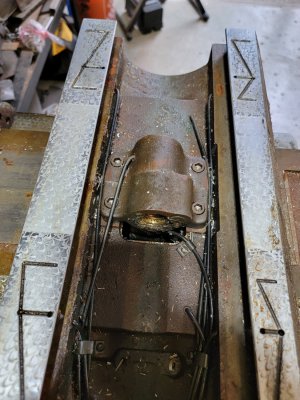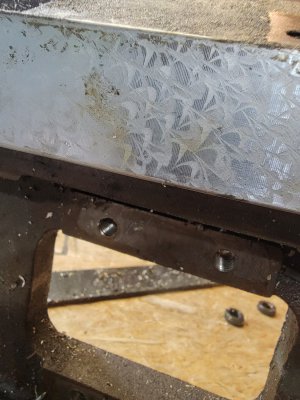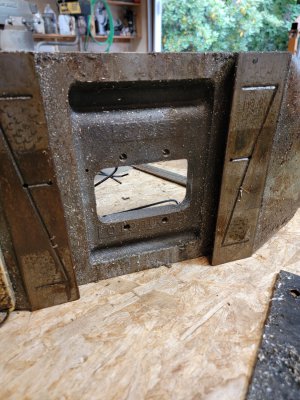- Joined
- Aug 4, 2023
- Messages
- 78
I am currently tearing down my new BP. Just removed the table. Was wondering if someone could explain this feature in the ways:

Right on the center of the ways on both sides it appears to be ground down exactly .003". Judging by the scraping marks i assume its intentional. Never seen anyone mention it or show it in videos I've watched.

Right on the center of the ways on both sides it appears to be ground down exactly .003". Judging by the scraping marks i assume its intentional. Never seen anyone mention it or show it in videos I've watched.



